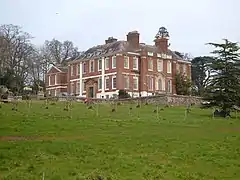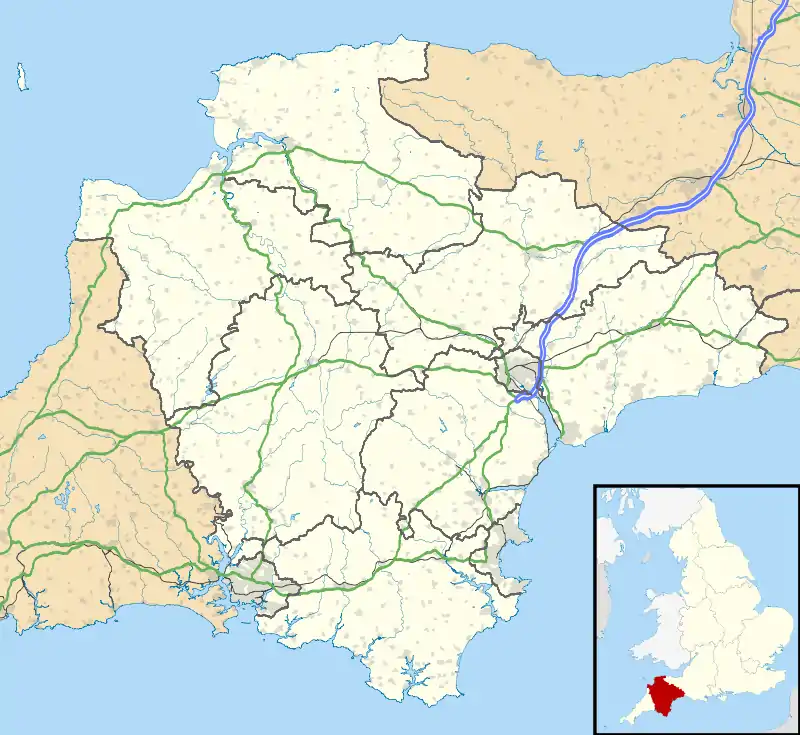Pynes House
Pynes House is a Grade II* listed Queen Anne style country house built by Hugh Stafford between around 1700 and 1725, situated in the parish of Upton Pyne, Devon, 3 miles northwest of Exeter.[1]
| Pynes House | |
|---|---|
 Pynes House | |
 Location within Devon | |
| General information | |
| Architectural style | Queen Anne |
| Town or city | Upton Pyne, Devon |
| Country | England |
| Coordinates | 50.756104°N 3.540979°W |
| Completed | c. 1700–1725 |
| Technical details | |
| Size | 21,000 square feet (2,000 m2) |
| Design and construction | |
| Architect | Inigo Jones |
Description
The house has four storeys and covers 21,000 square feet (2,000 m2). Its present owners run the house as a wedding and events venue, offering 12 bedrooms. It is set in gardens and grounds of 37 acres. The building is primarily made of bricks to a square plan, with Portland stone dressings. The principal roof is slate, with four large brick chimney stacks.[1] An 1827 account relates that "Pynes House contains some valuable pictures, particularly a fine Van Dyke, in the eating-room, and several excellent family portraits".[2]
History
Poem
The renovations at the house in 1789 inspired Sebastian Emmett to write the poem Written on Viewing the Improvements at Pynes-House, the Seat of Sir Stafford Henry Northcote, Bart. Near Exeter. 1789, which talks about the house and the design of the gardens, but also alludes to the character of the nation at the time.[3][4][5]
References
- Historic England. "Pynes (1097597)". National Heritage List for England. Retrieved 12 June 2014.
- Williams, Thomas H. (1827). Devonshire scenery: or, Directions for visiting the most picturesque spots on the eastern and southern coast. p. 38. Retrieved 30 December 2011.
- "The London Review and Literary Journal". The European Magazine: 195. September 1792.
- Gottlieb, Evan (2016). Representing Place in British Literature and Culture, 1660–1830: From Local to Global. Routledge. p. 194. ISBN 9781317065890. Retrieved 3 January 2020.
- Moore, Dafydd (2009). "Patriotism, Politeness, and National Identity in the South West of England in the Late Eighteenth Century". ELH. 3 (76): 745–746. JSTOR 27742957.